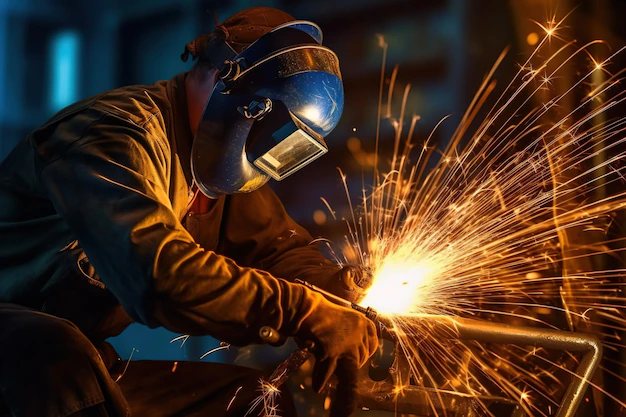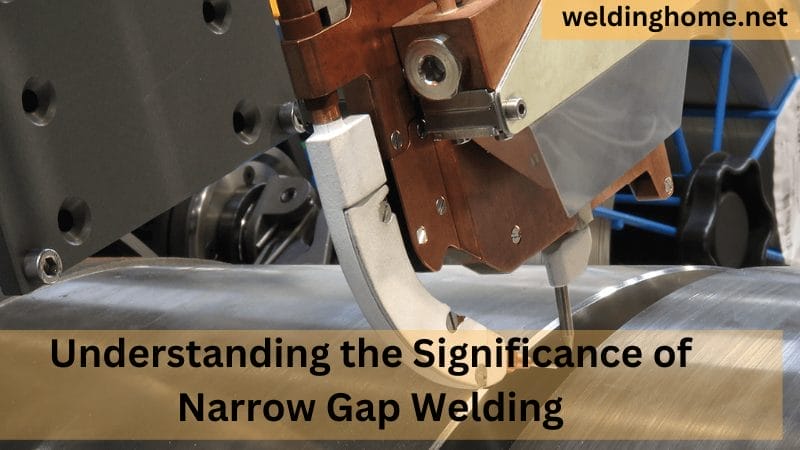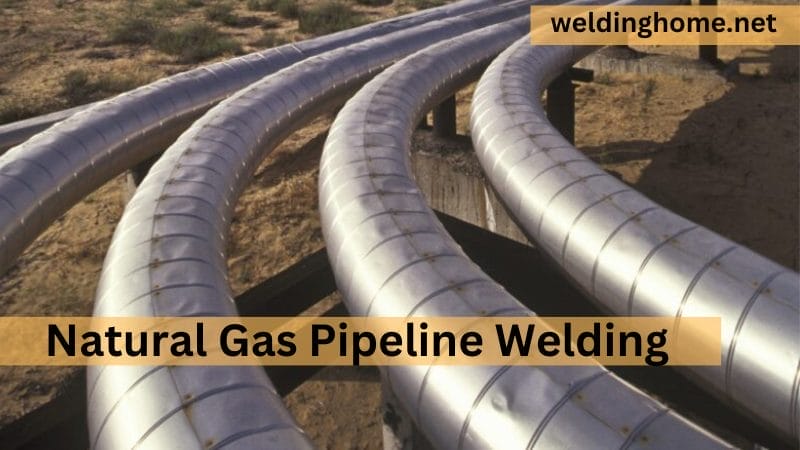What is the Highest Quality Welding?

Introduction
This article explains the importance of welding in different industries as it helps join metal parts together. The strength, durability, and safety of the welded joints depend on the quality of the welding. I will cover in this article the key elements of high-quality welding and the factors that contribute to achieving it.
Multiple metal parts can be joined together using the critical welding method, which combines heat and pressure. It has several uses in the manufacturing, automotive, aerospace, and construction industries, among others. The quality of welding is critical to maintain the structural strength and prolong the life of the welded components.
Understand the Significance of Producing High-Quality Welds.
To achieve high-quality welding results, it’s essential to consider several important factors. The welding technique used is particularly critical. Different welding processes, such as TIG, MIG, SMAW, or FCAW, have unique characteristics and demands.
Find out the five standard arc welding methods that create these basic structures. 000000000000000Selecting the correct technique for the application is crucial to achieving optimal fusion and minimizing defects.
- MIG Welding – Gas Metal Arc Welding (GMAW)
- TIG Welding – Gas Tungsten Arc Welding (GTAW)
- Stick Welding – Shielded Metal Arc Welding (SMAW)
- Flux Welding – Cored Arc Welding (FCAW)
- Atomic Hydrogen Welding (AHW)
- Gas Tungsten-Arc Welding
- Plasma Arc Welding
MIG Welding – Gas Metal Arc Welding (GMAW)
Gas metal arc welding (GMAW), often known as MIG welding, is a common welding technique that uses a continuous wire electrode and shielding gas to produce precise and durable welds. This adaptable method is frequently employed in the fabrication, manufacturing, and automotive sectors. MIG welding is a popular choice for many welding applications because of its high efficiency, good weld quality, and capacity to weld a variety of metals and thicknesses.
Temperature, humidity, cleanliness, and ventilation all play a role. If there’s too much moisture or contaminants in the environment, defects can arise and compromise the weld. So, it’s essential to maintain a controlled and appropriate welding environment to consistently produce good quality welds.
TIG Welding – Gas Tungsten Arc Welding (GTAW)
Gas tungsten arc welding (GTAW), sometimes referred to as TIG welding, is a precise and adaptable welding technique. Strong, high-quality welds are produced using a non-consumable tungsten electrode, an inert gas, and an optional filler metal. TIG welding is recognized for its capacity to create precise and clean welds on a variety of metals, including copper, aluminum, and stainless steel. This method is frequently utilized in fields where superior weld quality and aesthetics are crucial, including aerospace, automotive, and precision fabrication.
Stick Welding – Shielded Metal Arc Welding (SMAW)
Shielded Metal Arc Welding (SMAW), another name for stick welding, is a flexible and popular welding technique. It makes use of a consumable electrode that has been covered with flux to produce a slag that shields the weld from impurities and acts as a shielding gas. Stick welding is popular because it is portable and versatile, making it appropriate for use in construction and outdoors. It is a prevalent option in sectors including construction, pipelines, maintenance, and repair because it is frequently used for welding steel and iron.
Flux Welding – Cored Arc Welding (FCAW)
A constantly supplied tubular electrode that is filled with flux is used in the flexible welding process known as flux welding, also known as cored arc welding (FCAW). By forming a shield around the weld with this electrode, ambient contamination is prevented. Flux welding is very useful when it’s outside and windy since the flux offers additional protection. It is frequently employed in the building, shipbuilding, and structural manufacturing sectors. Flux welding is a favored option for many welding applications due to its versatility and ability to weld a variety of metals, including mild steel, stainless steel, and nickel alloys.
Atomic Hydrogen Welding (AHW)
A focused beam of energy, such as an electron or laser beam, is used in the advanced welding method known as energy beam welding (EBW) to produce welds that are exact and of a high caliber. The metal surfaces are melted by the energy beam, which enables them to fuse together and create a sturdy weld junction.
Deep penetration, a small heat-affected zone, and the ability to weld a variety of materials, including metals with high melting temperatures, are just a few benefits of EBW. Precision, speed, and control are essential for obtaining outstanding weld quality in sectors including aerospace, automotive, and electronics manufacturing, where this technology is frequently utilized.
Arc Welding
In order to melt and fuse the metals, arc welding entails creating an electric arc between an electrode and the workpiece. This procedure uses a variety of techniques, including flux-cored arc welding (FCAW), gas metal arc welding (GMAW), and shielded metal arc welding (SMAW).
Gas Welding
Gas welding employs a fuel gas, such as acetylene, combined with oxygen to produce a flame for melting and joining metals. It is commonly used for low-alloy steel, copper, and aluminum welding.
Fuel gas and oxygen are used during the common welding procedure known as gas welding to create a flame that can melt and unite metal parts. This time-tested welding technique can be used to join a variety of metal kinds and has been around for decades.
Resistance Welding
A common welding method is resistance welding, which involves applying heat produced by resistance to electric current flow to join metal components. By applying pressure to the workpieces and running an electric current across the joint region, a weld is formed and localized melting is caused. High welding speed, great weld strength, and little distortion are just a few benefits of this method.
It is frequently employed in manufacturing sectors due to its effectiveness and capacity to create solid welds. Depending on the application and requirements, several resistance welding techniques are used, such as spot welding, seam welding, projection welding, and flash welding. Resistance weld integrity is guaranteed by post-welding procedures and quality control techniques.
Laser Welding
Laser welding is a modern and highly precise welding technique that utilizes a laser beam to join metal components together. It is a non-contact process where the laser beam focuses intense heat on the workpiece, causing the metal to melt and form a weld joint. Laser welding offers numerous advantages, including high welding speeds, minimal heat-affected zone, precise control over the welding parameters, and the ability to weld complex geometries.
It finds applications in various industries, such as automotive, aerospace, electronics, and medical devices. Laser welding provides excellent weld quality, and superior aesthetics, and is suitable for both thin and thick metal sheets.
Factors Influencing Welding Quality
- The quality of a weld is influenced by various things. These consist of:
- selecting a welding technique
- choosing the proper welding settings
- Welder experience and skills
- cleanliness and base materials’ readiness
- Input heat control
- Material compatibility
- Use of suitable welding consumables
Processes for Welding Differently
There are numerous welding techniques available, each with unique benefits and restrictions. Here are a few frequently used welding techniques:
The steps in the procedure are as follows:
Equipment setup: A welding torch, gas cylinders for fuel gas (such as acetylene, propane, or natural gas), and oxygen are necessary for gas welding. A handle, mixing chamber, and various tips or nozzles for adjusting the flame’s size and shape are the standard components of a torch.
Gas supply: From the gas cylinders, separate hoses carrying fuel gas and oxygen are connected to the welding torch. For effective combustion, the flow rates of both gases must be correctly controlled.
Flame formation: By opening the gas valves and igniting the fuel gas with a spark or pilot flame, a controlled flame is produced at the torch tip. The fuel gas and oxygen mix in the mixing chamber, creating a hot flame with temperatures reaching several thousand degrees Celsius.
Preheating: Prior to welding, the base metal may need to be preheated using the outer cone of the flame. Preheating helps reduce thermal stress and promotes better fusion between the metals.
Welding operation: The inner cone of the flame, known as the reducing flame, is directed at the joint to melt the metal surfaces. The welder uses a filler rod, usually made of the same or compatible metal, to add additional material to the joint, enhancing its strength.
Conclusion
In order to combine metal components and build robust and long-lasting structures, welding is an essential procedure used in many industries. Assuring the integrity and dependability of the weld joints requires producing high-quality welds. To achieve the highest quality welding, a number of factors must be taken into consideration, including welding process selection, correct management of welding parameters, material selection, joint design, welding technique and skill, quality control, and pre-and post-weld operations.
To create welds that meet the required criteria, it’s crucial to follow industry standards and rules, receive the appropriate training, and put in place effective quality control procedures. Industries may produce welds that are sturdy, long-lasting, and up to the highest requirements by giving priority to these elements.
FAQ’S
What is welding?
Welding is a process of joining two or more metal pieces together by applying heat and/or pressure. The goal is to create a strong and permanent bond between the materials.
What are the different types of welding processes?
There are several types of welding processes, including arc welding (MIG, TIG, stick), gas welding, laser welding, resistance welding, and more. Each process has its own advantages, applications, and techniques.
What factors contribute to achieving high-quality welds?
Several factors contribute to achieving high-quality welds, including proper selection of welding process, control of welding parameters (current, voltage, speed), material selection, joint design, welding technique and skill, quality control measures, and pre-and post-weld processes.
What are some common weld defects?
Common weld defects include porosity (gas pockets), incomplete fusion or penetration, cracks, undercutting, and distortion. These defects can compromise the strength and integrity of the weld.






